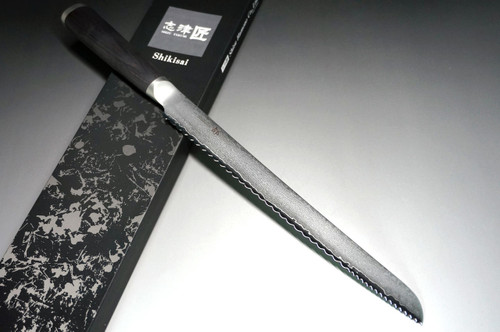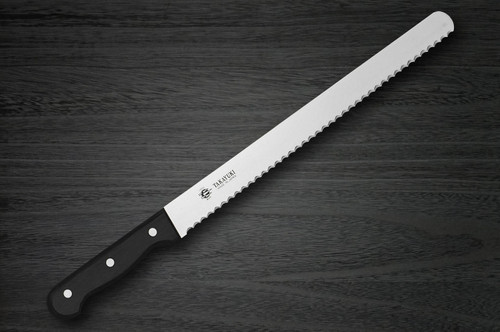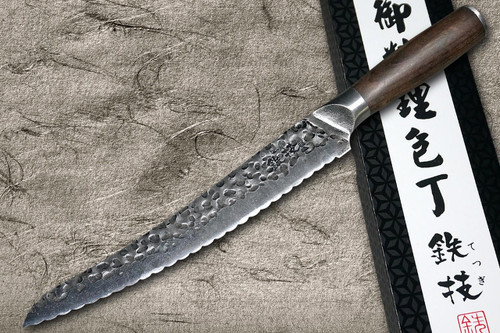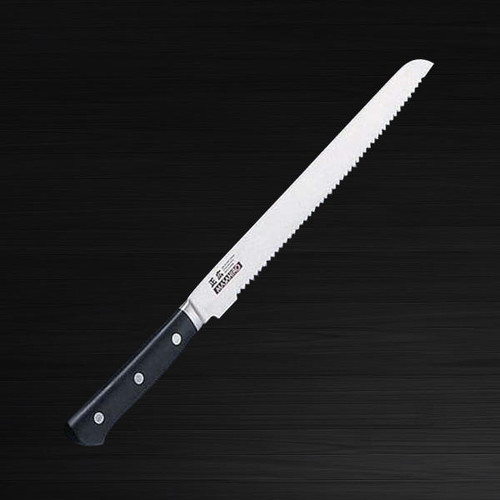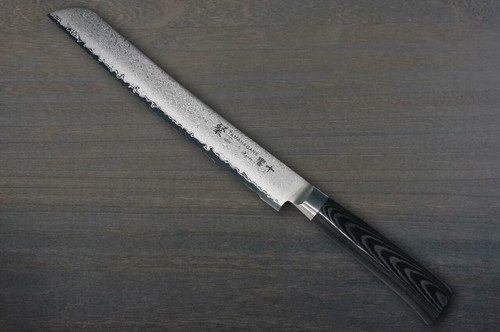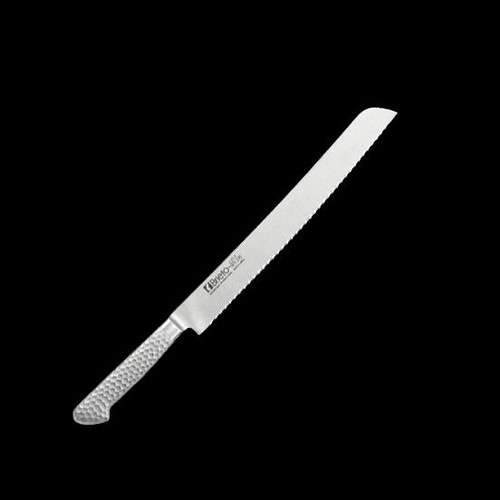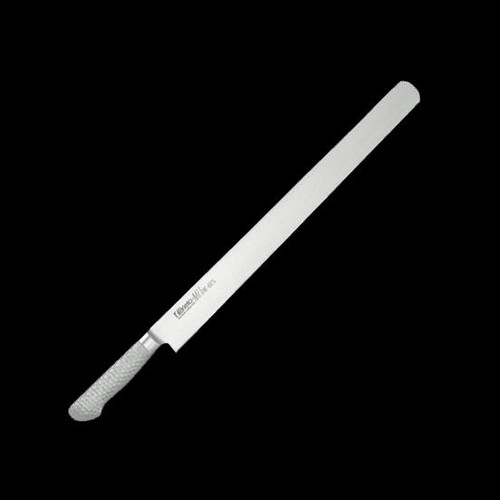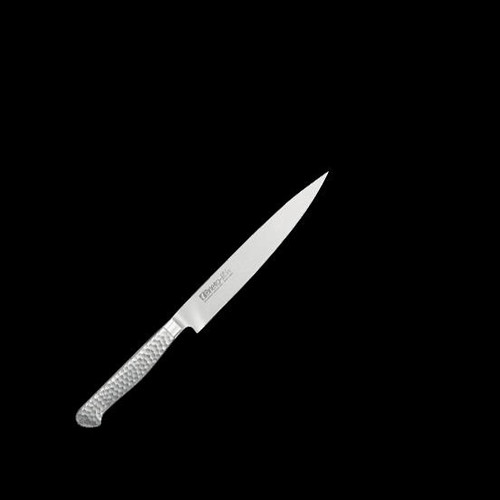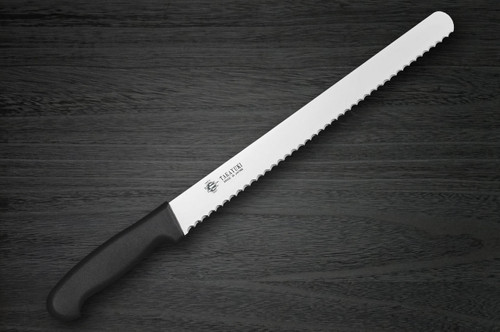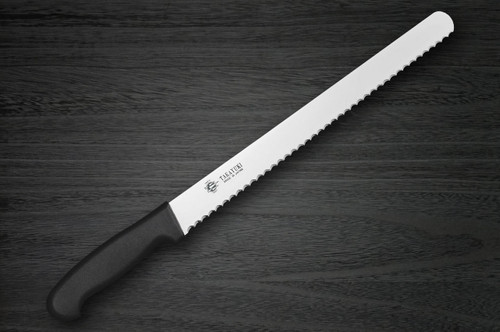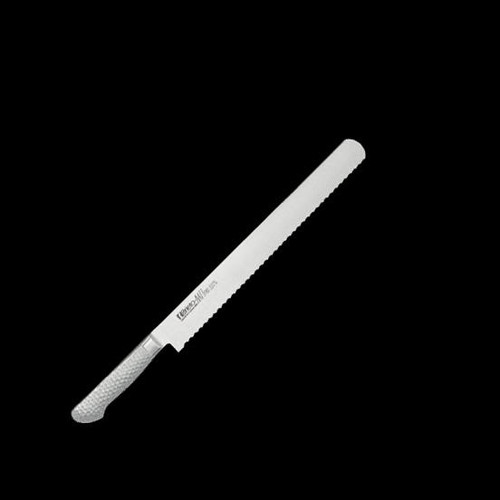Bread Slicer(Cake) Selections
Do You Need a Bread Knife? Benefits and How to Use It

"Which bread knife should I choose?"
"Is a bread knife really necessary?"
Do you have these concerns?
A bread knife helps you slice bread cleanly. Choosing the right one improves efficiency and ensures safety.
This article explains how to choose a bread knife and its benefits for those considering purchasing one. Please read to the end for guidance on product selection and purchase decisions.
Is a bread knife really necessary? What are the benefits of using one?
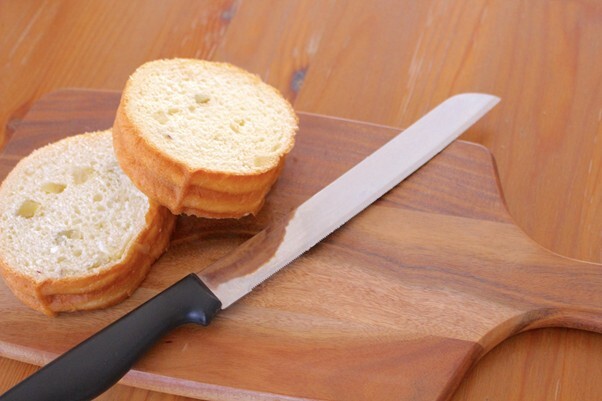
There are three major benefits to using a bread knife.
- Benefit 1: Cuts bread cleanly without squashing it
- Benefit 2: Significantly improves work efficiency
- Benefit 3: Reduced risk of injury and safer use
Let's explain each one.
Benefit 1: Cuts cleanly without squashing the bread
The biggest advantage is that it cuts cleanly while preserving the texture and shape of the bread.
With a regular knife, soft bread can get squashed or the cut surface can become uneven. The serrated blade of a bread knife smoothly cuts through the dough, allowing you to slice without applying excessive force.
This means you can neatly slice both fluffy white bread and firm baguettes, presenting them with a clean, appealing appearance.
Benefit 2: Significantly Improved Work Efficiency
Using a bread knife significantly improves work efficiency.
While a regular knife requires multiple back-and-forth motions, a bread knife cuts smoothly with fewer strokes. It also reduces fatigue since you don't need to apply unnecessary force. Its design minimizes blade snagging, shortening the cutting time itself. For households that eat bread daily, this time-saving effect is a huge advantage. You'll be able to slice bread quickly even during busy mornings.
Benefit 3: Reduced Risk of Injury and Safe Handling
Another major advantage is that a bread knife is safer to use and less likely to cause hand injuries.
When cutting bread with a regular knife, applying too much force can cause your hand to slip or the knife to suddenly advance. However, the serrated edge of a bread knife provides just the right amount of resistance, making it easier to control. Furthermore, its sharpness means you don't need to apply excessive force. Even beginners or elderly individuals can cut bread safely. The fact that the entire family can use it safely is a key feature of a bread knife.
Can a bread knife be used for other foods besides bread?
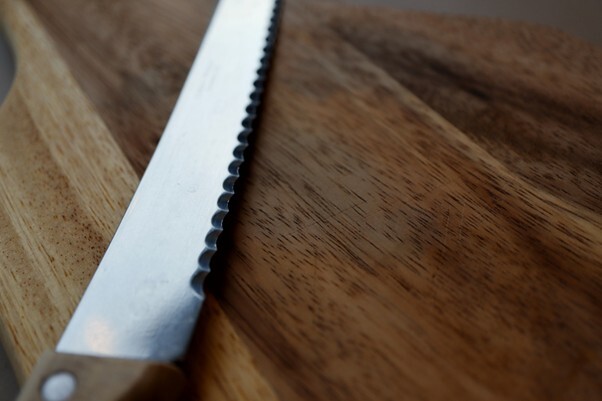
While a bread knife can be used for other ingredients besides bread, its applicability has limitations.
- It can also cleanly slice baked goods and cakes
- Can handle tomatoes and roast beef
- Not a universal knife
Let's explain each one.
It can also cleanly slice baked goods and cakes
A bread knife is also suitable for soft, crumbly sponge cakes and pound cakes.
The serrated edge firmly grips the surface, allowing you to cut through without tearing the thin crust or baked surface. This results in a less crumbly cross-section and uniform cuts, enabling you to plate or wrap the cake while preserving its beauty.
It's especially useful for visually important tasks like evenly slicing whole cakes.
Also suitable for tomatoes and roast beef
The bread knife excels at handling combinations of thin skin and soft interior, making it suitable for ingredients like tomatoes and roast beef.
With tomatoes, a regular knife can catch on the skin and crush the flesh, but a serrated blade cuts through the skin without crushing the inside.
It also allows for clean cuts through foods with a well-seared surface, like roast beef, preserving both appearance and texture.
A major advantage is that even blades that appear specialized for bread can be applied to specific food structures.
Not a universal knife
While a bread knife is a convenient tool, it is not an all-purpose knife.
It cannot cut hard vegetables, meat bones, or fish bones. It is also unsuitable for detailed work or thin slicing, so a regular knife is necessary for most cooking tasks. The serrated edge of a bread knife is designed specifically for certain foods and cannot handle all cooking tasks. It's important to think of it as an auxiliary tool, specifically for bread and soft foods. For efficient cooking, we recommend using both a bread knife and a regular knife appropriately.
How to Choose a Bread Knife
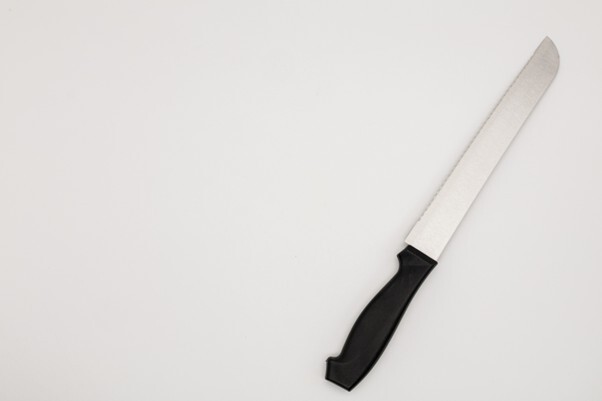
There are three main points to consider when selecting a bread knife.
- Choose by Blade Shape (Serrated vs. Straight Edge)
- Selecting by Blade Length
- Features and Selection by Price Range
Let's explain each one.
Choosing by Blade Shape (Differences Between Serrated and Straight Edges)
There are three blade shapes for bread knives: "serrated," "straight," and "hybrid."
Serrated blades have jagged edges, making them versatile for cutting a wide range of breads, including hard-crusted varieties.
Even on hard surfaces like baguettes, the blade bites in easily and cuts steadily.
A straight edge blade is smooth and straight, producing clean cuts on soft breads like sandwich loaves.
Hybrid blades combine features of both types, with a serrated tip and a straight edge in the middle. For beginners, the versatile serrated blade is recommended.
Choosing by Blade Length
Select the blade length of your bread knife based on the size of the bread you typically cut.
For standard loaves (about 12cm wide), a blade length of around 20cm is suitable. If you frequently cut large French baguettes or whole cakes, choose a longer bread knife of 25cm or more. Conversely, if you mainly cut small bread or rolls, a shorter knife around 15cm is sufficient. A blade that's too long becomes unwieldy, so it's important to base your choice on the size of bread you cut most often.
Features and Selection by Price Range
Bread knives vary significantly in characteristics depending on their price range.
| Price Range | Features | Recommended Uses |
|---|---|---|
| USD20 to 30 | Basic sharpness and limited durability | Occasional bread slicing |
| USD30 to 80 | Good balance of sharpness and durability | Households that eat bread daily |
| USD80 and the above | High sharpness, long-lasting | For those passionate about cooking |
Low-priced options like 100-yen stores or Nitori are suitable for those wanting to try them out. Mid-priced options offer a good balance of performance and price, recommended for most households. High-priced options feature professional-grade quality, ideal for those seeking long-term use.





